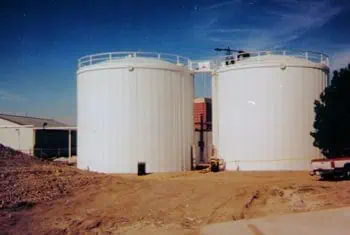
08 Apr Choosing the Right Type of Tank Insulation and bolted tank
Choosing the right type of tank insulation and bolted tank depends on the purpose. In the case of refrigeration tanks, insulation is usually composed of an outer shell made of stainless steel or riveted aluminum. It helps to give the tank a more aesthetically pleasing look.
In addition, the thickness of the insulation layer determines the dimensions of pipes. The refrigerator door is typically constructed with an insulation frame. Here are some things to consider when selecting the right type of tank insulation.
Tank roofs
The proper roofing system is key to the integrity of a tank, and each roof type presents unique challenges for the insulation system.
ISO Services, a global leader in tank roof insulation and bolted tanks, offers engineering services and applies systems that ensure maximum efficiency of unit. Its methods include the use of horizontal panel systems and vertical panel systems fastened in various ways to the roof. Here are some details of these techniques. Listed below are some of the most common methods.
Conventional insulation may leave the tank roof bare and can cause corrosion if improperly installed. Panel systems have numerous protrusions that can sabotage a perfect seal. TICs, on the other hand, adhere directly to the substrate without gaps.
TICs offer a seamless barrier and prevent CUI. Unlike steel jacketing and panel systems, TICs do not degrade performance and can even greatly reduce the effects of a passing rainstorm.
The support plate 60 is fitted onto the roof 19 by a manway 17. The cylindrical nozzle 62 is then placed over the bar 22 and a circular fillet weld is made on the upper edge of the flange and the support plate.
Finally, the cover 64 is attached to the roof by a fillet weld 74. This is the final step in insulating the tank. And the entire process should only take a few hours.
bolted tanks
In some cases, tank manufacturers may choose to provide a flange on the midpoint of a tank to anchor vertical straps. A flange can provide a more secure anchor point to hold panels in place during installation. The installation process can be completed in service, as well as with the aid of a low-risk hot work permit. The panels are then bolted together, enabling quick and simple installation without compromising the integrity of the vapor barrier.
Another benefit of bolted tanks is the ease of installation. They are designed to fit a wide range of conditions, including concrete.
Additionally, CST storage companies employ factory trained crews to ensure proper installation. Investing in a quality tank means more than coated steel. It’s about expertise during construction and service afterward. For this reason, CST Tanks offers a full range of tanks for almost any application.
Moreover, the panels are secured with metal fasteners. They are also designed to resist expansion, and their position may vary depending on the size of the storage tank.
A single row of panels may be placed inside a large tank, while a second row of panels can be installed outside the tank. Once the panels are installed, they should be covered with insulation materials. Typically, a polyurethane foam-based insulation material is used.



Sorry, the comment form is closed at this time.